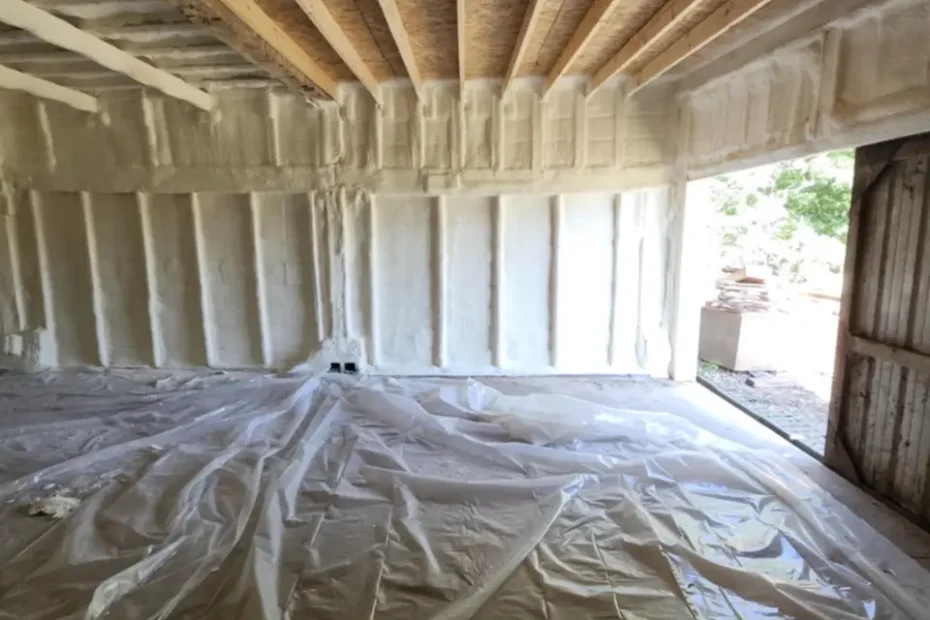Understanding Spray Foam Insulation
To understand whether spray foam insulation is fire retardant, it’s essential to grasp the basics of how this insulation works. Spray foam insulation is a versatile product that can expand after application, filling in nooks and crannies to create a tight thermal seal. Its effectiveness in sealing gaps makes it a popular choice for homeowners and builders looking to improve energy efficiency and indoor comfort.
One of the key characteristics of spray foam insulation is its ability to provide a barrier against air infiltration. By blocking air movement, it helps maintain consistent indoor temperatures and reduce energy consumption. This not only saves money on heating and cooling bills but also contributes to a more environmentally friendly home.
Moreover, spray foam insulation can help minimize the entry of outdoor allergens and pollutants into the living space, promoting better indoor air quality. This added benefit makes it a desirable option for those concerned about respiratory health and overall well-being.
When considering fire retardancy, it’s important to know that there are different types of spray foam insulation, each with varying fire-resistant properties. Some formulations are specifically designed to enhance fire safety, making them ideal for applications where reducing the risk of fire is a top priority.
In summary, understanding the insulating and air-sealing properties of spray foam insulation is crucial before delving deeper into its fire retardant capabilities. By learning how it works to enhance energy efficiency and indoor comfort, we can better appreciate its potential role in fire prevention and safety.
The Science Behind Fire Retardancy
When exploring the science behind the fire retardant qualities of spray foam insulation, it’s necessary to consider the materials used in its composition. Spray foam insulation typically consists of two main components, polyurethane and isocyanate, which react when mixed to expand and harden.
These chemical reactions play a crucial role in the formation of a durable and fire-resistant barrier. The cellular structure of cured spray foam creates a physical barrier that can withstand high temperatures and inhibit the spread of flames, providing valuable time for occupants to evacuate in case of a fire.
Furthermore, certain additives can be incorporated into the spray foam formulation to enhance its fire retardant properties. Flame retardants and intumescent coatings are examples of additives that can improve the insulation’s ability to resist flames and reduce smoke generation in the event of a fire.
By understanding the chemical processes and additives involved in the creation of fire retardant spray foam insulation, we gain insight into why it is considered a reliable choice for enhancing fire safety in residential and commercial buildings.
Testing Fire Resistance of Spray Foam Insulation
Testing the fire resistance of spray foam insulation involves subjecting the material to rigorous evaluations to determine its performance under fire conditions. Standardized tests, such as the ASTM E84 test for surface burning characteristics, are commonly used to assess the flammability and smoke development of building materials.
In addition to surface burning tests, fire resistance tests measure how well spray foam insulation withstands fire exposure over time. These tests simulate real-world fire scenarios to evaluate the insulation’s ability to maintain its structural integrity and fire resistance under extreme heat conditions.
Furthermore, researchers conduct flame spread tests to determine the rate at which flames can spread across the surface of spray foam insulation. This information is crucial for understanding the material’s potential fire hazard and for developing strategies to enhance its fire retardant properties.
By analyzing the results of these tests and ensuring that spray foam insulation meets industry standards for fire resistance, builders and homeowners can have confidence in the safety and reliability of this innovative insulation product.
Comparing Fire Safety Standards: Spray Foam vs. Traditional Insulation
When comparing fire safety standards between spray foam insulation and traditional insulation materials, it’s important to recognize the unique characteristics of each type of insulation. Traditional materials like fiberglass and cellulose have been widely used for their thermal insulating properties but may not offer the same level of fire resistance as spray foam.
Spray foam insulation’s ability to expand and fill gaps efficiently can help create a more airtight and fire-resistant barrier than traditional insulation. This superior sealing capability can prevent the passage of flames and hot gases, limiting the spread of fire within a building and potentially minimizing property damage.
Additionally, the self-adhering nature of spray foam insulation reduces the likelihood of gaps or voids that could become potential fire hazards. This seamless application method contributes to a more secure insulation layer that enhances both energy efficiency and fire safety standards.
By understanding the differences in fire safety performance between spray foam and traditional insulation, homeowners and builders can make informed decisions about the most suitable insulation choice based on their specific needs and priorities.
Installation Practices for Fire Retardant Spray Foam Insulation
Proper installation practices are essential for maximizing the fire retardant properties of spray foam insulation and ensuring its long-term effectiveness. When installing spray foam, it’s critical to follow manufacturer guidelines and recommendations to achieve the desired fire safety outcomes.
Attention to detail during the application process is key to creating a consistent and uniform insulation layer that can help improve fire resistance. Careful sealing of all gaps, cracks, and openings can enhance the insulation’s ability to restrict airflow and prevent the spread of flames in case of a fire.
Moreover, working with trained and certified professionals familiar with fire safety protocols can provide assurance that the spray foam insulation is installed correctly and meets industry standards for fire retardancy. Their expertise can contribute to creating a safer and more resilient building envelope.
By investing in proper installation practices and adhering to fire safety guidelines, homeowners and builders can optimize the fire retardant properties of spray foam insulation, leading to improved energy efficiency, indoor comfort, and peace of mind regarding fire protection.
